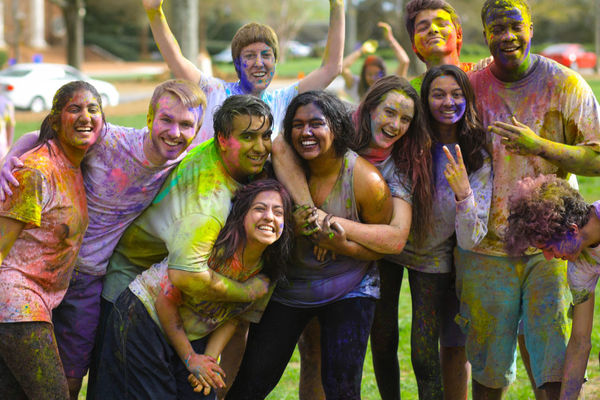Furman prides itself on its closely knit community of students. Given its small size and entirely residential campus, the University can foster a community unparalleled by larger schools. During a typical semester, students can be seen congregating outside the library, enjoying meals together, bustling through the dining hall during common hour and working out in the Physical Activities Center (PAC). It is difficult to walk anywhere on campus without meeting a friend or stopping to talk to classmates. Furman is a place that many call home due to the mutual support and closeness that students share. Yet right now, that sense of community seems absent, replaced instead by a pervasive aura of fear and skepticism.
The campus’s new “trust-no-one mentality” is illogical and divisive. For the past several months, students have been away from one another. In that time, we have watched our college experiences morph into something unrecognizable and become accustomed to the feelings of loneliness and anxiety that have come to seem ever-present since March. There is not a single student on this campus who has emerged from the pandemic unscathed. So, we all share a common experience: one that should highlight our dependency on each other. Yet instead of leaning into Furman’s built-in community, we have made petitions to kick out students regardless of context and have taken to social media to anonymously slander our peers.
Perhaps our mistrust stems from what we have lost as a result of a pandemic that depends on social proximity to spread. We have seen even rudimentary levels of social interaction stripped away. Extending a smile to a friend across campus is now blocked by a mask; leaving the door open on the hall to make friends during freshman year is no longer permitted; joining our friends in the Dining Hall is now a risk to our health. Campus is currently missing half of the Furman family, but it is evident that, no matter how far apart we are, we need one another now more than ever.
Instead of using our community as an outlet for safe interaction, we are viewing those outside of our “bubbles” as threats. People are reporting fellow students left and right, assigning blame for every misstep and mistake. It is one thing to hold each other accountable for reckless behavior, but quite another to be mistrusting of a fellow student without solid evidence and anonymously berate them on social media. We have reached a crossroads for our community: we can make the decision to encourage one another to do our best, or we can become skeptical and assume the worst.
Ultimately, the only way we can maintain our close-knit community is by following the health and safety guidelines, not only for ourselves but also for the well-being and safety of our fellow community members. While we may not be able to interact in the same manner as we did in the past, we can come together in other ways that perhaps carry new significance. Each time we wear a mask, each time we social distance, we express to our community that we value each other over our own comfort and desires. We do these things with the hope that, one day, we may come out on the other side of this as a stronger community.
